Cherry plum planting rules

Cherry plum is the closest relative of the plum, although it is inferior in taste to it with a slightly obsessive sourness, but it surpasses in many other indicators. Gardeners, knowing about the wonderful properties of the plant, try to plant it on their site. Moreover, the fruits are consumed not only fresh, they lend themselves well to canning. In this article, we will tell you how to properly grow cherry plum in order to get a quick and bountiful harvest.
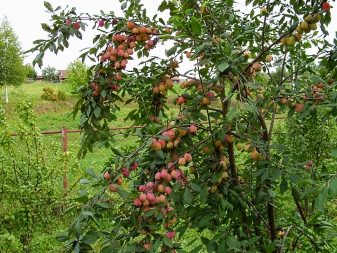

Timing
Most fruit trees are planted in spring or autumn, cherry plum is no exception. In the northern regions with long frosty winters, it is better to plant in spring when there is no frost, but the saplings have not yet begun to flow. If you plant the plants in the fall, they may not have time to take root until frost.
Until recently, cherry plum was not planted at all in cold areas. But the development of new varieties of distant intergeneric hybridization today makes it possible to do this.
Cherry plum crosses easily and adapts to new conditions. These properties allowed breeders to develop frost-resistant varieties, such as a hybrid of cherry plum with Sino-Ussuri plum, varieties Yarilo, Zlato Scythians, Cleopatra.

In the southern regions (Kuban, Crimea) and in the middle zone with a temperate climate (Moscow region), cherry plums are planted in autumn and spring. Each season has its own advantages and disadvantages.
It is in the fall that a large assortment of seedlings is presented at gardening fairs, you can choose good varieties, healthy specimens. The trees planted in winter will already get stronger by spring, they do not need to adapt, they direct their energies to development and growth. In addition, after overwintering, cherry plum becomes stronger and more frost-resistant.

But during the autumn planting, you need to monitor the temperature indicators and plant the plants no later than 2-3 weeks before the first frost. This time will take cherry plum to get accustomed. In the south of the country, trees and bushes are replanted from the end of October to the whole of November. In the middle lane - during October.
Spring planting has its advantages: no need to spend energy on watering, melting snow will provide it completely. Only the southern regions will have to work hard, where snowy winters are rare.
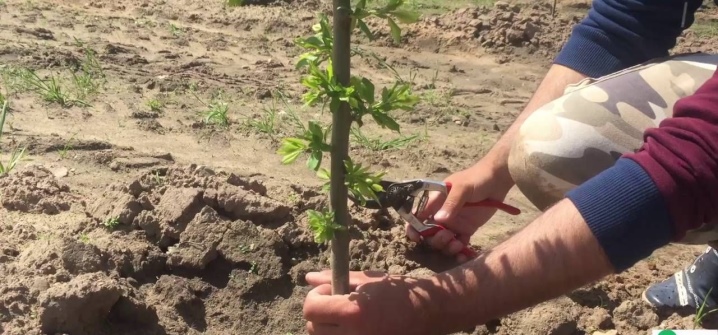
Spring planting in the south begins in early March and tries to catch it before the flowers bloom. In the middle zone of the country, cherry plum is planted at the end of March, after the last frosts, and throughout April, until the buds swell. In the north, the planting date is the end of April - May. The main condition is to plant after frost and before the start of sap flow of plants.
By the way, you can buy seedlings for spring planting in the fall, using a large selection of planting material, then dig them in the garden, placing the plant at an angle. After that, cover the cherry plum with spruce branches or other insulation and leave until spring. When the snow melts and the frosts recede, the cherry plum is transplanted to its permanent place of growth.
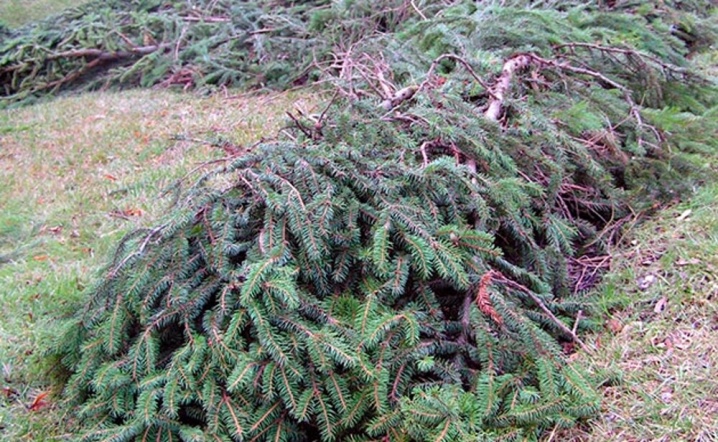
Choosing a place and "neighbors"
Site selection and compatibility with other trees are important criteria for good yields. Let's dwell on this topic in more detail.
Pick-up location
Cherry plum is originally a southern plant, thanks to its endurance, it easily takes root in central Russia and even in the north, but it does not change its preferences, it loves warm sunny places, protected from drafts and wind.
The tree takes root well on slopes. But in the lowland it should not be planted, precipitation will accumulate there, cherry plum does not like excessive moisture.There is no need to worry about groundwater, cherry plum grows quietly even with a meter depth of their occurrence, since its developed root system is quite short, no more than half a meter.
As for the soil, cherry plum prefers fertile lands, gray forest soil, loam with neutral acidity... It will take root on other soils, but the yield will be lower.
If you know the composition of the soil in the garden, you can work on it: overly acidic "extinguish" with ash or dolomite flour, treat too alkaline with gypsum, add peat to the clay soil.
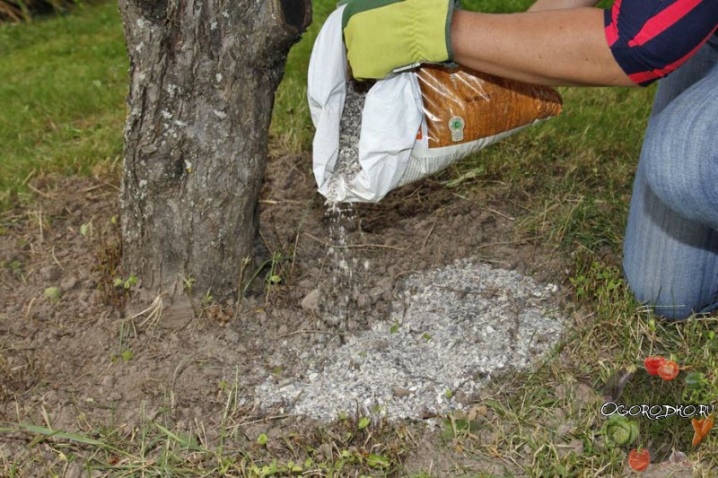
Neighboring Plants
Since most species of cherry plum do not pollinate themselves, trees should be planted with plants of their own kind. But it is necessary to choose varieties that bloom at the same time as cherry plum, for example, Red Ball or Fast-growing plum.
As for the negative impact, it happens in cases where the roots of the cherry plum grow at the same level with plants that have the same shallow root system. There is competition for food. Some garden trees emit substances perceived by the cherry plum as toxic, you should try to avoid being near them.
- There is an incompatibility with pear, apple, sweet cherry, cherry.
- You should not plant a walnut or apricot next to it, they grow large and oppress the surrounding vegetation with their power.
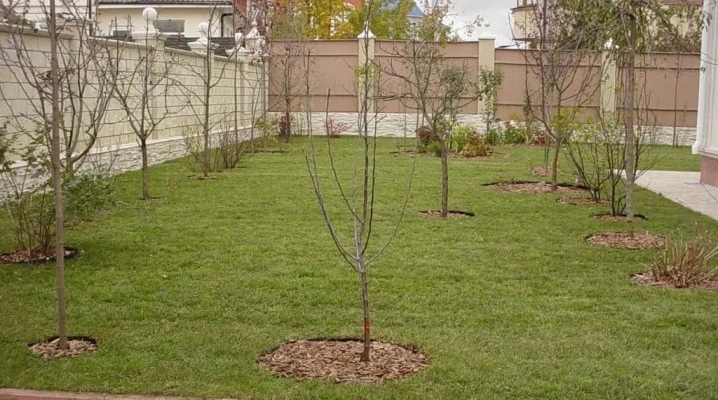
How to plant correctly?
The scheme for planting cherry plum on a plot in open ground is simple and does not differ much from the cultivation of other garden trees. It is necessary to follow simple rules, and the survival rate of seedlings will be high.
- If several plants are planted, the distance between them must be at least two meters.
- In order for cherry plum in the future to please with its yield, it is necessary initially choose healthy planting material with developed strong roots.
- For autumn planting, a hole is dug and fertilized 2-3 weeks before the plants are lowered into it.... To plant a tree in the spring, it is better to take care of the planting pit in the fall, since in the spring it may not have time to prepare before the sap flow of the plant.
- For cherry plum, a hole is dug with a diameter of 60-70 cm... Humus, manure and nitrophosphate should be added to the soil removed from the pit. Mix everything thoroughly. Fill the hole with the resulting composition by 2/3 of the volume, water and leave for several weeks for autumn planting. If the planting is spring, the feeding pit is left until spring. Do not forget that the soil must be neutral, you may have to work with it, achieving acidity stabilization.
- On the day of planting, a mound is formed in the hole from the remaining soil mixture, a little fertile soil is added on top so as not to burn the roots with fertilizer. Before planting, a seedling with open roots is kept in a manganese solution for several minutes, and then in preparations that stimulate the root system ("Kornevin", "Zircon"). A plant grown in a container is transplanted along with an earthen clod.
- A seedling is placed on the mound formed in the hole, the roots are carefully straightened and covered with earth, slightly tamping, to avoid voids and allow the plant to contact the nutrient soil.
- During planting, the root collar must not be buried, it must be at the level of the ground line... If the seedling is already grafted, the grafting site should rise 5-7 cm above the soil.
- To form an even tree, you need to lay a horizontal bar on top of the hole, and fix a vertical peg to it. Tie the plant to the peg, setting it as evenly as possible, and only then fill the hole with soil.
- When planting is finished, it is necessary to pour 2-3 buckets of water under the seedling, then sprinkle the watering site with dry earth so that the soil does not crack when it dries out.... It is better for these purposes to cover the root circle with mulch (peat, sawdust, straw). It is not recommended to transplant plants during the day, only early in the morning or in the evening.
If everything is done correctly, after 3-5 years the cherry plum will start to delight the gardener with its harvest.
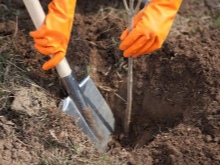
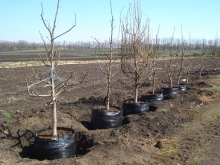
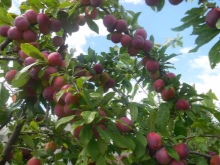







The comment was sent successfully.